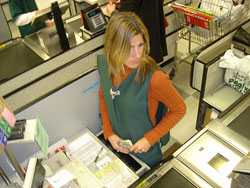 The right color choice can mean the difference between a successful retail shop and one that lacks customer sales.
The right color choice can mean the difference between a successful retail shop and one that lacks customer sales.
Psychologists have long agreed that color plays a significant role in people’s emotions. Different colors can invoke an array of feelings, especially during first impressions. It makes sense for retailers and business owners to understand the psychology of color and how it can influence customers’ moods and their buying decisions. The use of color in retail is one of the most effective ways to subconsciously entice customers and spark an emotional response. In this article, learn what emotions certain colors are linked to and how retailers can use these to evoke appropriate responses for their particular businesses.
The psychology of color in retail businesses has been studied for decades.
A study called The impact of color on marketing found that up to 90% of people make assessments about products based on colors alone. Research has also shown that there are physiological changes that take place in people when they are exposed to different colors. Studies found that certain colors can excite, relax, increase appetite, and even change body temperature. Since color has such a powerful effect on customers’ moods and decisions, it pays to understand the psychology of using certain shades. This information can be of great use when deciding what color to paint the walls of a yoga studio or the exterior of a specialty retail shop.
Business owners have the power to use color to their advantage depending on the products they offer. Keep in mind that the brightness and darkness of a color can change the psychological message that a business wants to convey. The amount of color used can also have a certain impact. For instance, red is an energetic and passionate color that can invoke excitement when it’s used in small amounts as an accent color. When a lot of red is used in a retail establishment, however, it could cause anger or aggressiveness. Pink, the calmer and softer version of red, radiates feminine energy and confidence.
It pays for retail establishments to understand the influence of color and how it can affect their customers’ first impressions, mood, and buying decisions.
Blue tends to have a therapeutic and calming effect on customers. Shades of blue suggest a sense of loyalty and dependability, which are two traits customers look for in a business. Blue reduces tension, invokes a feeling of trust, and suggests honesty. Green is another color that creates a sense of calm and compassion. Green is also associated with nature and healing, and it is surprisingly stimulating to thirst.
Yellow in retail stores signifies happiness, playfulness, and mental clarity. But too much yellow can be agitating and stressful for customers, signifying a get-in-and-get-out type of establishment. Orange is usually associated with affordability and value, and it induces excitability and optimism. While it’s softer than red, orange is a color that should not be used in excess, except in businesses like gyms.
The use of color is a wonderfully effective tool that can gain favorable results and responses when approached in the right way. Of course, this depends on the particular type of retail business. For example, orange is an ideal color for retailers who wish to promote affordability and dependability in their products. Stores who want to set up special displays for women’s products may choose pink or purple for a soft, feminine touch, while men’s clothing stores are better suited with blues. Exercise establishments should consider opting for red or orange for accent colors, while shops that sell baby products may want to use lots of light blue and mint green. Toy stores might consider bright and basic colors such as yellow, blue, and red.
The right color choice can mean the difference between a successful retail shop and one that lacks customer sales. Taking the time to understand color psychology is a great way for any business to get favorable responses using colorful promotional efforts!
The retail experts at Specialty Store Services can help you choose the right display solutions for your store that can help you use the power of color to your store’s advantage. Call 800.999.0771 or visit our website for more information.










